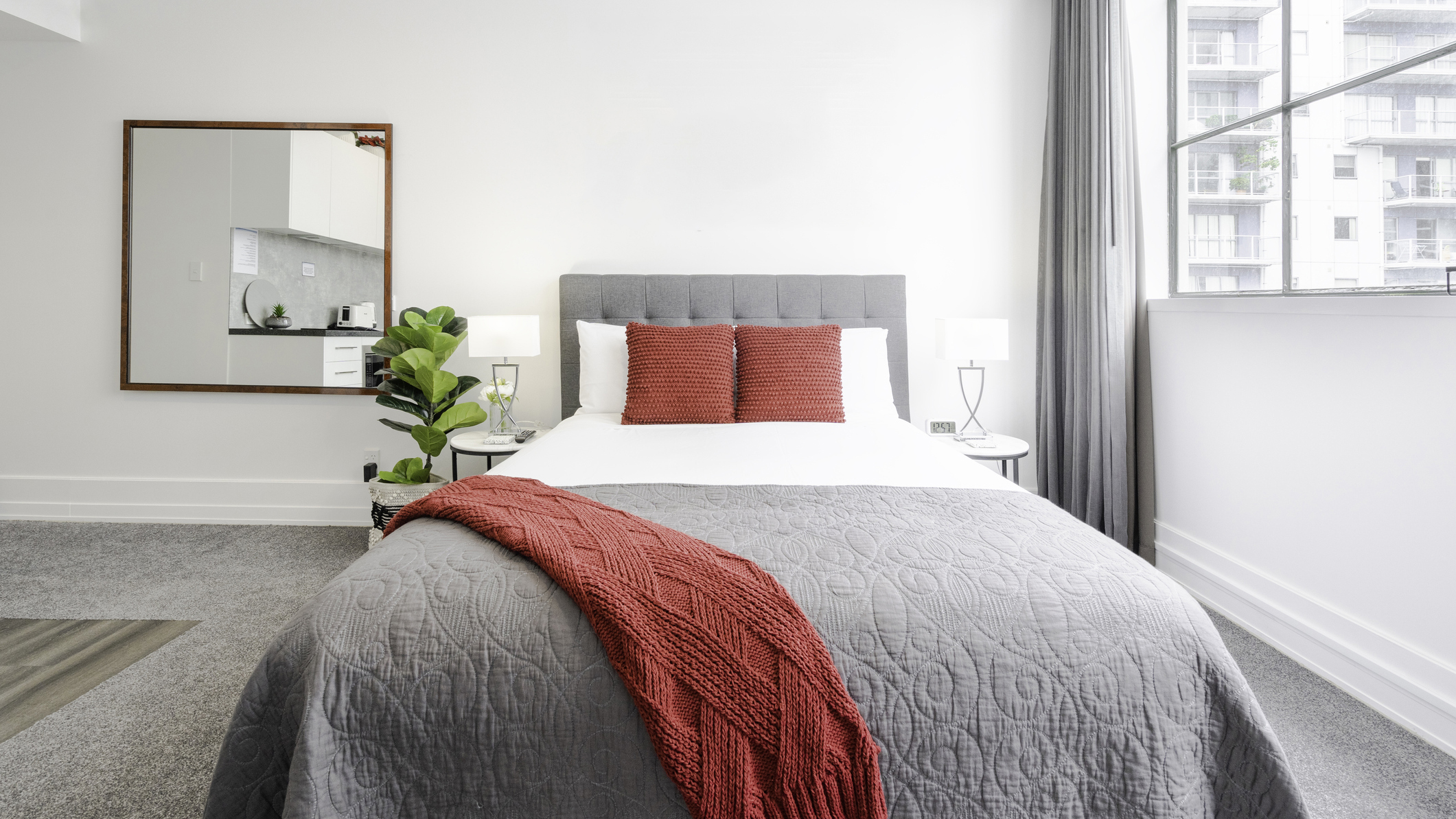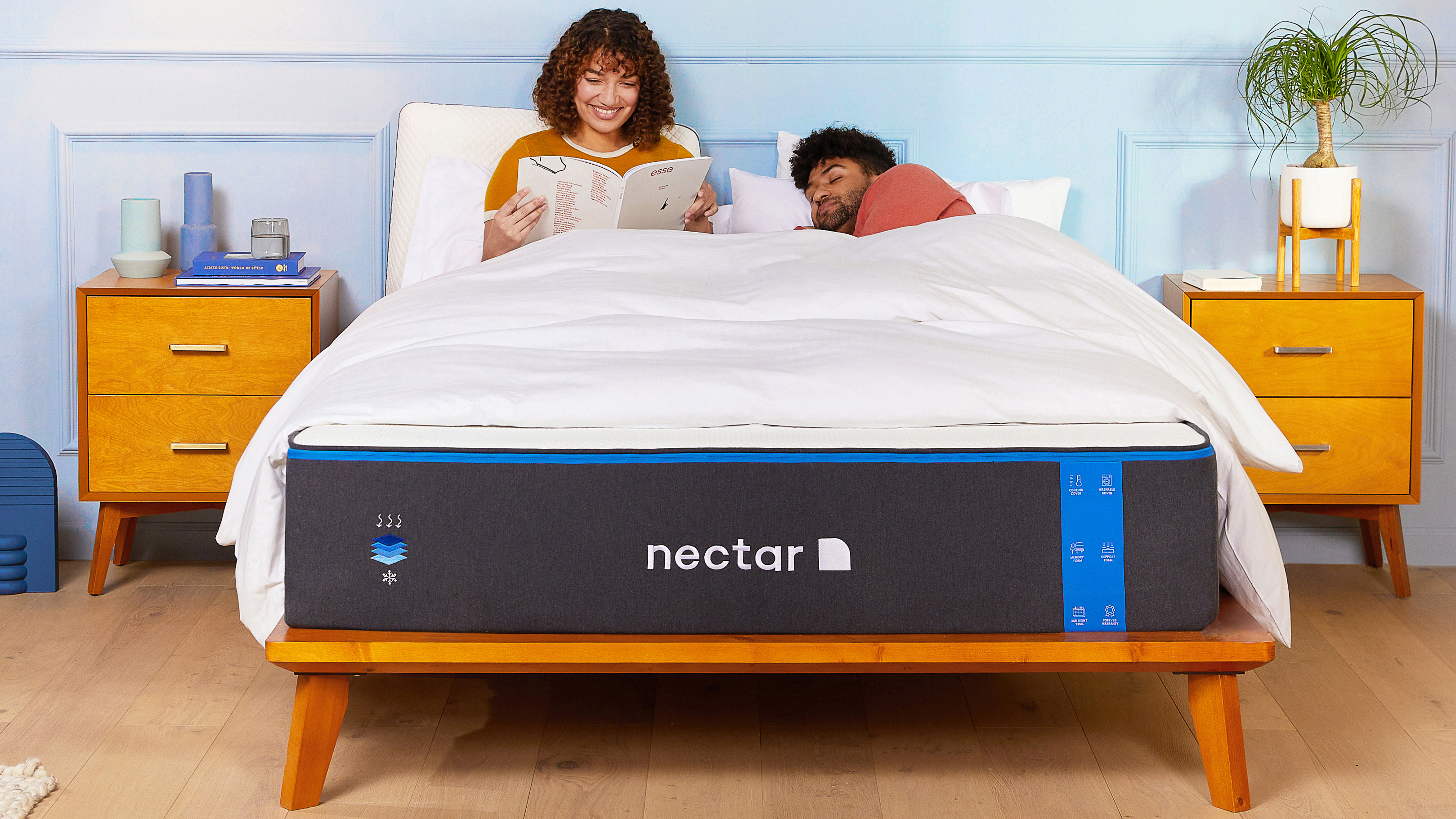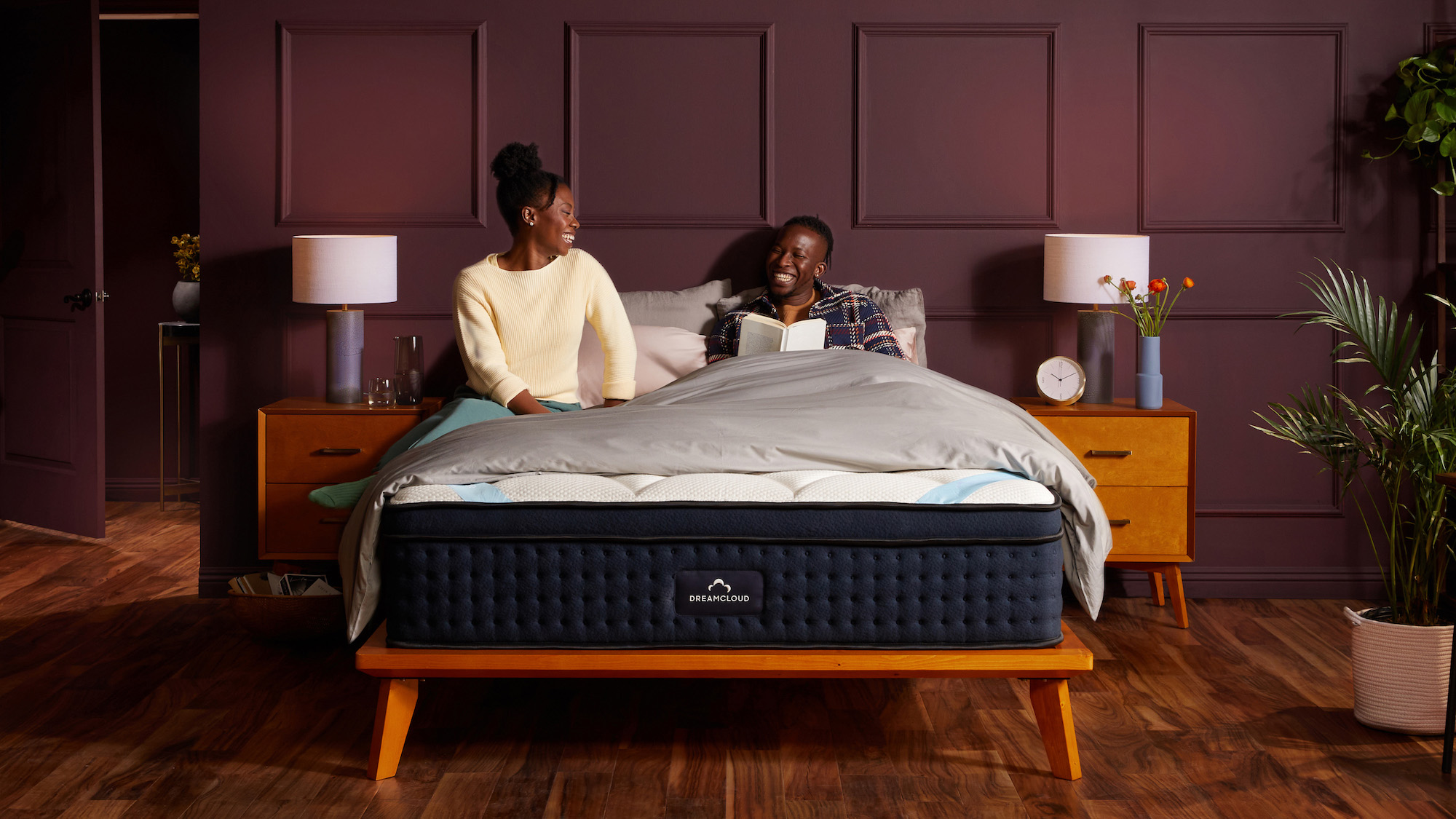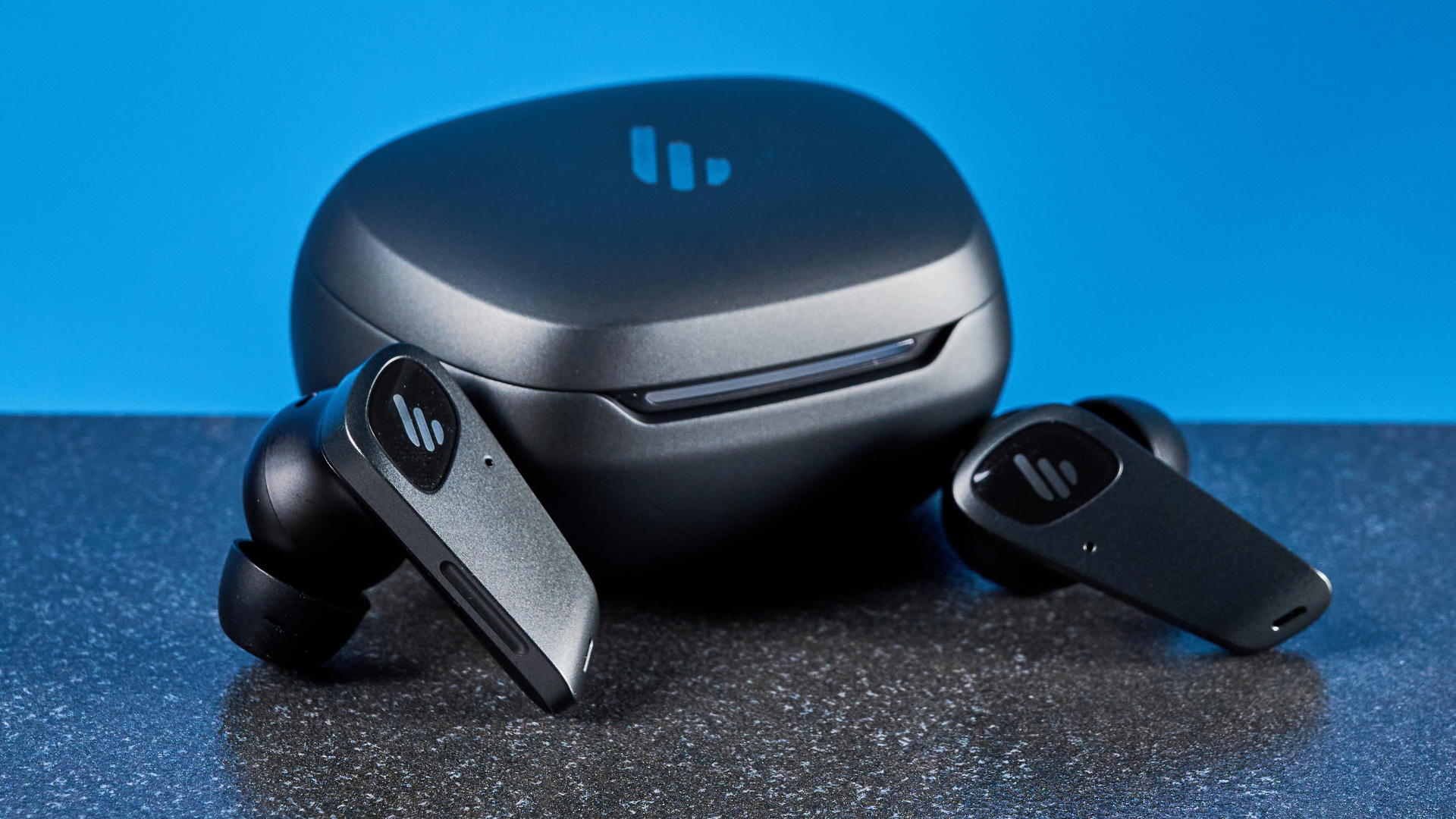Do memory foam mattresses need a box spring?
Not all memory foam mattresses need a box spring – here’s why

To get the most out of your mattress, it’s important that you place it on a suitable foundation. That's because even the best mattress for your sleep needs a proper base to help it perform at its most comfortable and supportive, but not all foundations are suitable, especially if you have a memory foam bed.
Before the best memory foam mattresses came along, the most popular bed choice was innerspring mattresses. Most of these need a box spring – a fabric-covered wooden frame containing springs, providing extra support, minimizing motion transfer and stopping the mattress from sagging.
So do memory foam mattresses need a box spring? Not always. All-foam models are made differently to innersprings and as they are usually constructed in layers with a firm base, you might not need the extra features provided by a box spring. Some all-foam models also sag when placed on a box spring that has slats spaced too far apart.
Here we explain what you need to know about memory foam mattresses and box springs, including the alternative foundations worth considering.
What is a box spring?
Box springs are wooden or metal spring-filled frames that are the same size or deeper than a mattress. They provide a surface for your mattress to sit upon to keep it supported, while boosting breathability and keeping the motion to a minimum – all features that are important if you share a bed or sleep hot.
In most cases, box springs are made with springs or slats and feature a cloth covering. They help extend the life of your mattress by helping distributing your body weight. A good box spring will also add height to your bed – ideal if you need to raise up your mattress to make it easier to get in and out.
Not all box springs are made equal though. In fact, some very basic models wear out easily, so you may find springs poking through. This could puncture your memory foam bed and pose a risk to you.
Sign up to get the BEST of Tom's Guide direct to your inbox.
Get instant access to breaking news, the hottest reviews, great deals and helpful tips.
Memory foam mattresses in a box can also be much heavier than innerspring models and therefore need more support. That means not all memory foam mattresses need a box spring, as we'll explain now...
- Are memory foam mattresses good for your sleep? A look at the pros and cons
- 3 signs that you need a box spring for your mattress

Do memory foam mattresses need a box spring?
Because of the way all-foam mattresses are made, they typically require a more solid base than a simple box spring. The slats on many basic box springs are spaced too far apart to provide a stable surface for a memory foam mattress to rest on without sagging or dipping.
Ideally, these mattresses should be placed on foundations with either a solid surface or slats spaced no further than 2.75” apart. This will help the mattress to perform well, while keeping your spine aligned. If the slats are close enough together, they’ll support the mattress without a box spring foundation and you'll also meet the terms of the warranty.
You do need to use a box spring with a memory foam mattress if...
You are placing your memory foam mattress on a metal frame. That's because the metal frame will distribute your body weight and the weight of the mattress but only when you have placed it on top of a box spring first.
You don't need to use a box spring with a memory foam mattress if...
You own a platform bed. That's because the slats within the platform foundation are designed to dish out all the support you need for comfy sleep.
You own a proper wooden foundation. The slats on these are usually close together and identical in width, so there's equal support across the base to distribute weight.
It's common sense really, but you shouldn't use a box spring with a memory foam mattress on an adjustable base as you risk damaging all three. The adjustable bed itself will provide all the support (and flexibility) you need.
- Memory foam vs latex mattresses: an in-depth comparison
What other foundations should you use with a memory foam mattress?
Memory foam mattresses are designed to deliver everything you need to enjoy better sleep: support, breathability, minimal motion transfer and pressure-point relief. Placing yours on a suitable stable foundation will help it perform at its best, so it’s crucial to find the right base.
As mentioned, a good foundation for an all-foam mattress need to have a solid foundation or slats spaced no further than 2.75" apart. Options for a suitable base or foundation include the following:
Platform beds – These provide a sturdy surface (solid as well as slatted) for all mattresses including memory foam and hybrids. They are useful if you need extra storage space and come in a wide range of styles and prices.

Adjustable frame – If you need more flexibility, then a memory foam mattress is a good fit for an adjustable frame, as the foam easily conforms to the frame. However, it’s important to have a good-quality memory foam mattress that is supportive as much as it is flexible.
Bunkie board – These solid or slatted wooden (or metal) 1–3" platforms are placed on top of a bed base to add more support under a foam mattress. They help prolong its lifespan by providing a stable surface. This is an inexpensive way to add stability to your existing bed frame and make it suitable for properly supporting your memory foam mattress.
You can place a bunkie board on any bed frame – this includes solid platforms and slatted foundations, as well as box springs. So if you do want the height of a box spring, but require the extra strength, then a bunkie board is the ideal solution.
If you have recently invested in an all-foam mattress, check the warranty as using the wrong foundation or base with the mattress may invalidate your guarantee. For more guidance, see our feature on how do mattress warranties work.
Do memory foam mattresses need a box spring: Conclusion
If you want to get the most out of your memory foam mattress, then it will need to be placed on a solid and heavy foundation. Some box springs are fine as long as they are well-made, solid and don’t have huge amounts of space between the slats.
While you can strengthen your box spring by adding a bunkie board, it’s best to use a solid or slatted bed frame that is designed to work more efficiently with an all-foam mattress. Your sleeping position doesn't effect this either, so whether you have a bed designed for back sleepers or you have a mattress for side sleepers, the approach is the same.
While box springs are the ideal fit for innerspring mattresses, providing breathability, support and minimizing motion transfer, if you’re thinking about making the switch to a memory foam mattress, you might want to invest in a new bed frame at the same time.
This needn’t be expensive, and plenty of brands offer discounts when you buy a bed frame and mattress together. You should be able to use your new frame with all types of mattresses, including memory foam and innerspring, making it a worthwhile investment in the long run.
Some brands like Nectar and Casper say their all-foam mattresses work with every bed base including box springs, so we'd recommend checking with the manufacturer to see whether your chosen memory foam mattress can be used with a box spring. This information is normally found in the FAQ section.
Read more:
- Our guide to the best cooling mattress for hot sleepers
- Go natural with the best organic mattress
- Sleep calmer with the best weighted blankets for all budgets
- The best pillows for every sleeping position
- Get cozy with the best comforters: down and down-alternative
Grace is an experienced sleep writer and mattress reviewer who also contributes to our sister site TechRadar, among other Future plc brands. She's a big fan of organic sleep products and has recently invested in a wool mattress topper that she quite happily describes as "life-changing." (Hey, we're serious about our sleep products). When she isn't testing mattresses or writing about sleep, Grace enjoys reading and creative writing, and incorporates meditation and yoga into her wellness routine.

